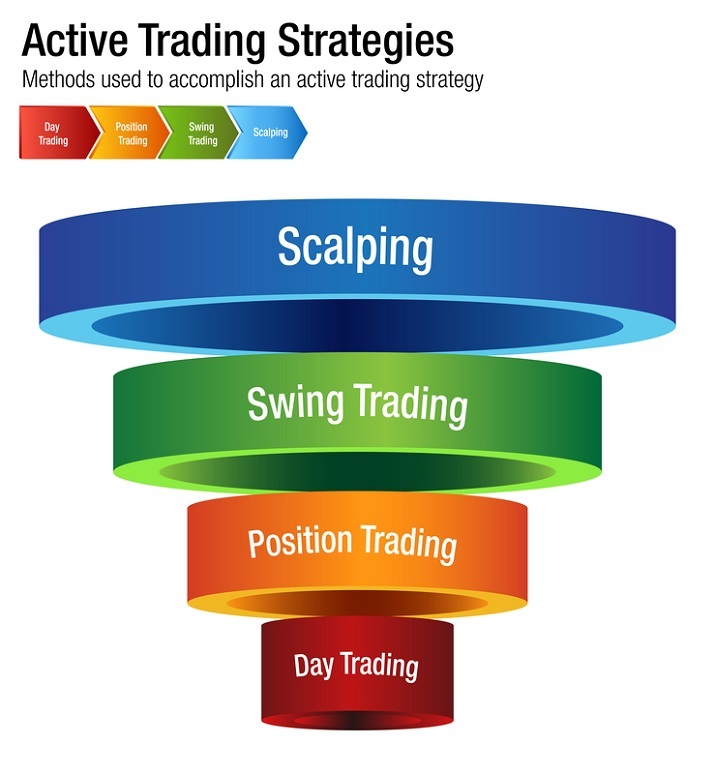
 Data Structure
Data Structure Networking
Networking RDBMS
RDBMS Operating System
Operating System Java
Java MS Excel
MS Excel iOS
iOS HTML
HTML CSS
CSS Android
Android Python
Python C Programming
C Programming C++
C++ C#
C# MongoDB
MongoDB MySQL
MySQL Javascript
Javascript PHP
PHP
- Selected Reading
- UPSC IAS Exams Notes
- Developer's Best Practices
- Questions and Answers
- Effective Resume Writing
- HR Interview Questions
- Computer Glossary
- Who is Who
Scalping
Introduction
Scalping is a well-known trading strategy that involves making profits from minor changes in a particular stock's price. It can be one or more small-term profit stocks, that are targeted throughout the day in a manner that does not violate any set rules of the trading market. Let's us in this tutorial get to know scalping as a trading strategy, and how it can help to gain massive perpetual profits in one day.

What is Scalping and How Scalping Works?
Scalping can be referred to as the process of building up smaller sets of profit from the minimum holding period of a particular stock. The main goal of scalping is to buy and sell a number of shares of the required inventory and then immediately sell them at a marginally higher or lower rate to make a minimal assured profit.
To begin with scalping, the pre-requisite abilities needed by a scalper would be to know how to respond quickly to market movements and grab the best possible opportunities before it's too late.
Knowing the Basics - Rules for beginners
Technical trading tools are one of the prerequisites you should always have in handy, be it scalping or any other trading practice, you would need certain principles to drive your trade practices.
The first and foremost step would be to make sure that you have placed a stop loss. This is done by placing an order with your broker to sell the security held by you when it reaches a certain price.
The next step would be to keep in mind to trade while utilizing the most liquid financial instruments at hand. Make sure to trade in securities that have a high trading volume, which can be easily brought and sold.
Trade during the most active time during the day. Considering the market, you operate in, it would be wise to trade during the most active market time, to ensure higher profits.
Figure out a preferred time frame that best fits your skillset within trading. It may be necessary to trade during peak hours, but it should also align with your capabilities.
Spend time practicing. It is always wise to make sure that your trading practices are on point under all market circumstances.
Focusing on these steps each time would help drive up profits in no time, but it is important to remember that being careful and consistent is also just as important as making a considerable profit over a period of time.
Theory Behind Scalping
The main theory behind scalping involves the strategy or belief that small moves in fluctuating stock prices are much easier to catch or profit from rather than large ones. Scalping relies on technical analysis, for its proper execution. It also involves the implementation of momentum indicators such as stochastic, and MACD among others to figure out the possible execution.
Examples of Scalping
Let us suppose that a trader tries to implement scalping by buying 50 shares of a particular stock, say JKL. The trader then sells those shares for a minimal addition to the stock price, which would land the trader the minimal profit per share sold and stack it up to get a nominal profit at the end of the trading period, clocking in an overall larger profit volume.
Features of Scalping
As a trading strategy, scalping involves making small profits from minor price changes in a stock's price.
It is a very fast-paced method of trading that requires sharp trading skills, which can only be executed by those traders who have a certain mastery over trading with accuracy and speed.
Scalping also requires a quick exit strategy because on large loss due to the wrong exit strategy could eliminate the smaller gains that took a certain amount of time to build.
Execution of Scalping Trading
Execution of Scalping Trading requires a trader to be able to spot the trends in the market, spot the peak profit point, and subsequently plot the exit points as required. It is also essential to anticipate the developments and dips in the buyer market.
Further, a trader must be able to read and interpret short-term charts. After setting the limit order to buy a specific number of shares at a pre-set price, the trade is executed automatically once the price falls to the limit order. The trader or scalper then waits for positive movements, and the minute-wise rise is where the trader exits the trade.
To profit better, it would be better to buy out a large number of shares from a stock that has shown significant growth in a scaled manner to make better overall profits and sell the same as fast as possible. Scalping is all about selling massive stocks in a matter of minutes.
Conclusion
Scalping is a trading practice that requires a person to have enough knowledge and proficiency in the stock market and also a solid understanding of the trends for a significant amount of time. It is considered to be a practice that is of high risk, and it would require a certain amount of expertise to get proficient at it. It is not recommended for beginner traders, and it is wiser to practice the basic trading techniques before getting into scalping as a primary technique.
FAQs
Qns 1. How can scalping be detected?
Ans. It is essentially the process of buying a large number of shares of X company and selling those shares immediately within the next minute or two to gain a massive profit amount, so to detect it, a share's immediate buy-out can be tracked to see if it is being scalped
Qns 2. Is scalping efficient?
Ans. Given that it requires a sheer amount of speed and proficiency in terms of selling and spotting market trends, for a beginner it won't be a fair option for trading technique. It is better suited to fast-paced and well-versed traders who are familiar with the market trends and the way they can influence their profit margins.
Qns 3. How can one get better at scalping?
Ans. The key method here would be to practice the necessary techniques and learn from them, over a period of time the increase in profits will help to understand the market trends and also to sell stocks faster to drive up the profits.

